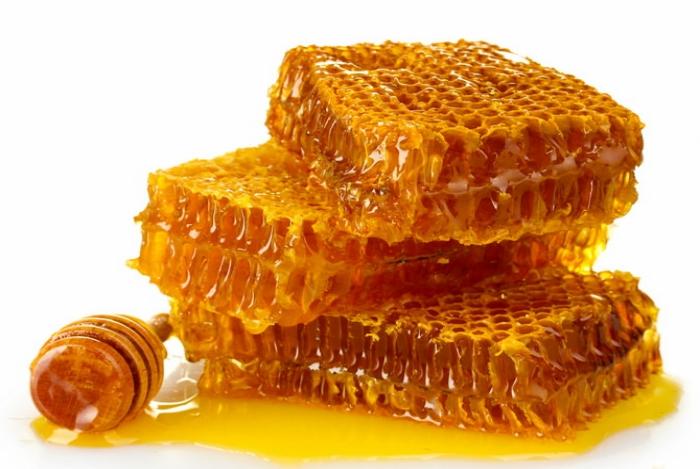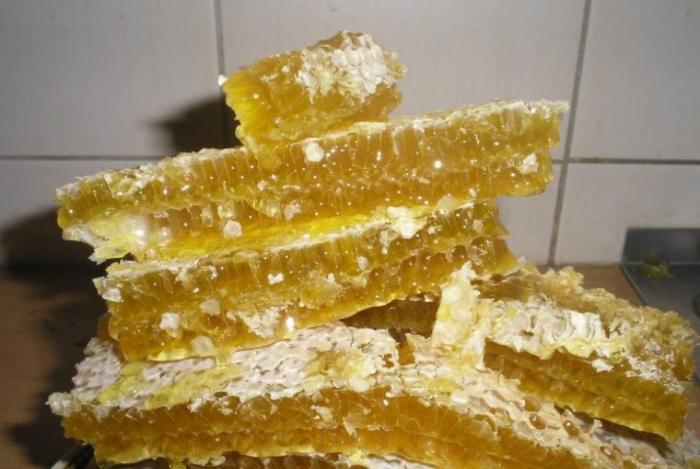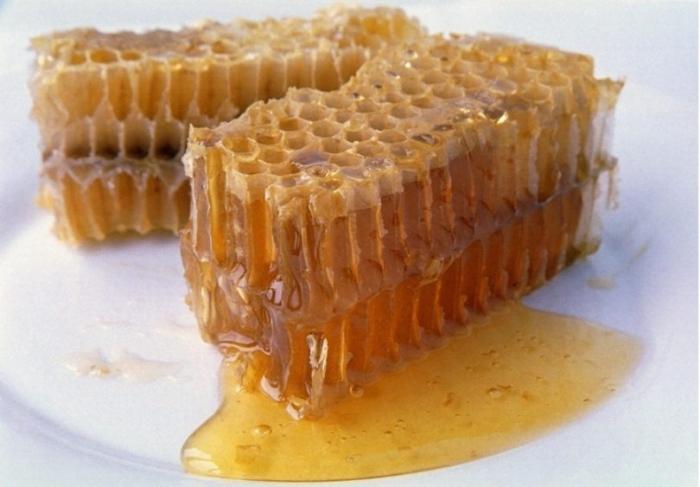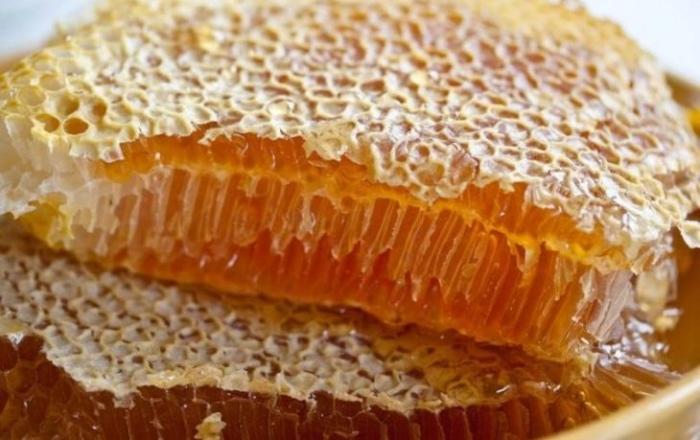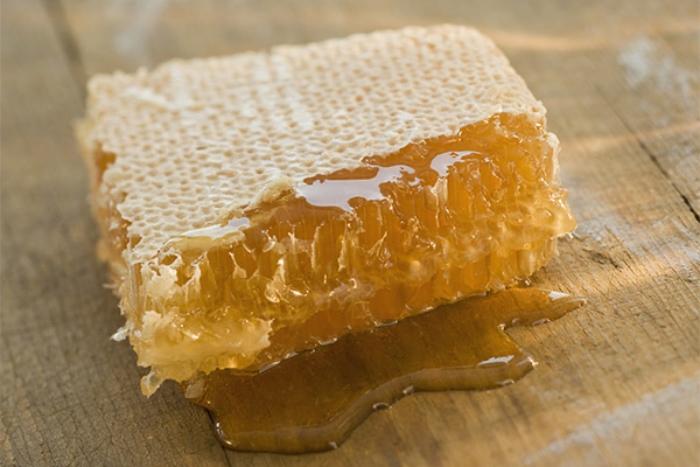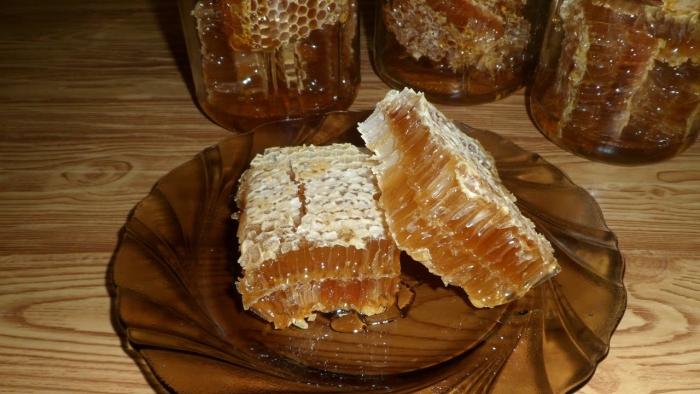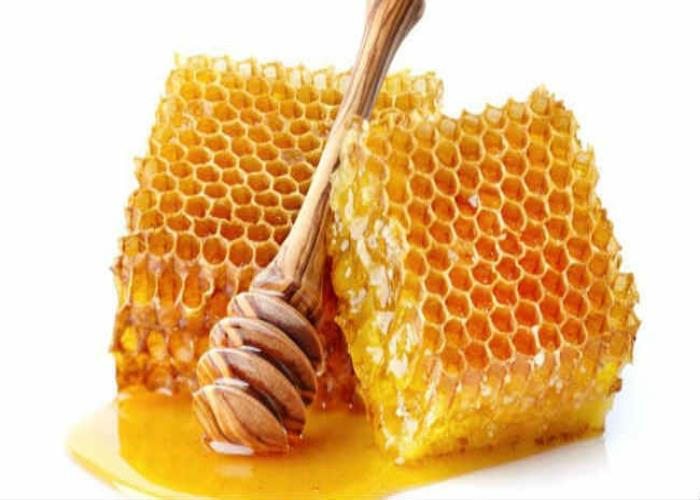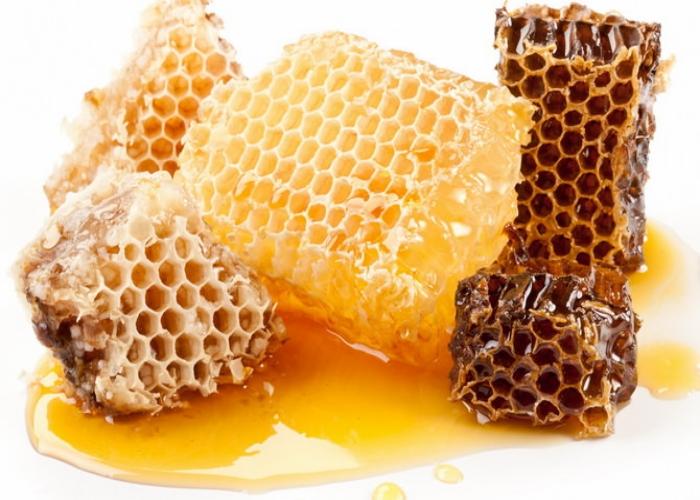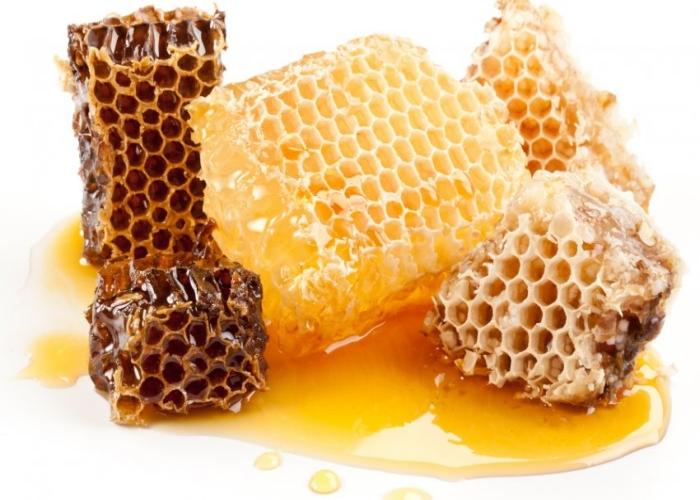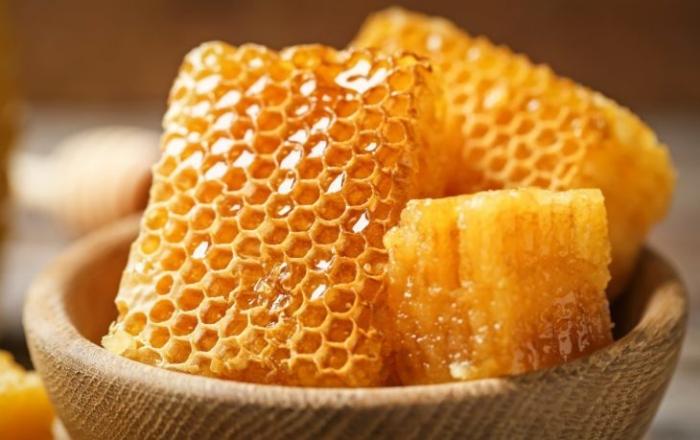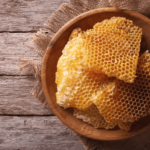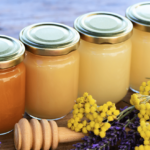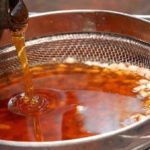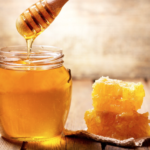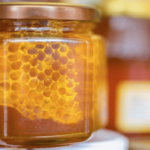Supporters of traditional medicine note the benefits of any beekeeping products. However, many fans of bee products are concerned about the question of whether wax honeycombs can be eaten. Before including honeycombs in your diet, it is important to familiarize yourself with the benefits of the product and the rules of use. Also, when using honeycomb honey and wax for medicinal purposes, you need to take into account their harm and contraindications.
Composition of honeycomb
Wax structures created from hexagonal cells serve as a container for food supplies (bread bread and honey), eggs, and larvae. Wax is a natural substance produced by honey bees through their wax glands. Wax is a solid substance ranging in color from white to yellow-brown.
The bulk of the product consists of:
- esters 70-75%;
- free fatty acids 12-15% (palmitic, neocerotinic, melissic);
- carbohydrates 12-17%;
- water 1-5%;
- polyhydric alcohols.
The beneficial qualities of the substance are due to the content of a large set of mineral elements, vitamins, and amino acids. The wax produced by bees in the spring is white in color and is the most valuable. The product used by insects to build honeycombs acquires a rich yellow tint, sometimes even brown, at the end of the season.
Is it possible to swallow wax?
Most often, for therapeutic and preventive purposes, it is recommended to slowly chew small pieces of honeycomb containing honey. Naturally, during the chewing process, you can accidentally swallow small pieces of wax.
Once wax enters the stomach, it is practically not absorbed by the body. It is noted that small particles of the wax product, when they enter the intestines, exhibit the qualities of an adsorbent, absorbing and removing toxins. However, it is not recommended to deliberately swallow large pieces of wax.
Will this be beneficial?
Thanks to its rich composition, beeswax exhibits various medicinal qualities: analgesic, anti-inflammatory, antifungal, antibacterial. Most often, it is recommended to slowly chew a piece of honeycomb with honey. After chewing, inflammatory processes in the throat, gums, and oral cavity are eliminated.Also, the value of wax honeycombs is manifested in the treatment of other diseases:
- nervous system;
- inflammatory processes of the kidneys, bladder;
- prevention of diseases of the cardiovascular system.
The positive effect of chewing honeycomb will affect your health if there are attacks of insomnia or depression.
How to use honey and honeycombs to treat diseases
When consuming honeycombs, not only wax, but also honey has a positive effect on the body.
Depending on the type of disease, various traditional medicine recipes are used.
For cardiovascular diseases
Moderate and regular consumption of comb honey has a healing effect on the body for the following diseases:
- Myocardial nutrition is disrupted during ischemia. Moderate portions of comb honey help cleanse the body of cholesterol and help stabilize blood supply. With regular use, shortness of breath attacks are reduced;
- for the treatment of hypertension and the prevention of pressure drops, it is also recommended to include cellular honey in the diet;
- attacks of arrhythmia are caused by failures and disturbances in heart rate. Experts recommend adding beekeeping products to treatment with traditional drugs, which help thin the blood.
The doctor-recommended adult dose is 50 g per day (about 2 tablespoons).
For pathologies
Honeycomb is an effective remedy in the treatment of diseases of the respiratory system. To treat asthma, it is recommended to chew a teaspoon of honeycomb every hour (the procedure lasts 10-15 minutes). The remaining wax should be spat out.
When treating hay fever, honeycomb is included in food.In case of a mild form of the disease, it is enough to chew cellular honey once a day. If the disease occurs in a moderate to severe form, honeycombs are chewed 5 times a day (during the first two days). In the future, honeycombs are chewed three times a day until the general condition improves.
In case of inflammation of the mucous membrane of the nasal sinuses, it is recommended to chew 1-1.5 tbsp for 15-20 minutes. spoons of honeycomb honey. Duration of treatment is 4-6 hours (a portion of honeycomb is chewed every hour). For preventive purposes, to prevent relapse, chew one portion of honeycomb every day for a week.
For anemia, it is recommended to consume a small piece of honeycomb several times a day. Honey helps increase body weight, improves the general condition of the body, increases the content of red blood cells and hemoglobin, increases appetite, eliminates dizziness and fatigue.
External use
Both wax and honeycomb honey are used to treat skin and muscle diseases. The most popular folk recipes:
- to treat wounds, burns, trophic ulcers, use a mixture of the following ingredients: 10 g beeswax, 100 g olive oil, 20 g pine resin, 20 g butter. The components are mixed and heated for 10 minutes in a water bath. The ointment is cooled, spread in a thin layer on a gauze bandage and applied to the damaged area for 3-5 hours;
- for mastopathy, use an ointment made from the following components: 80 g of oleoresin and celandine, 100 g of wax, 600 g of olive oil. First, the resin is boiled in olive oil for 30-35 minutes, then wax and crushed celandine are added. Boil the mixture in a water bath for 10 minutes and filter. The cooled composition is applied to the desired area of the body;
- to get rid of calluses, use an ointment: 30 g of wax is mixed with 50 g of propolis and the juice of one lemon. The mixture is boiled in a water bath until the wax dissolves, and poured into a storage container. Apply the cooled mixture daily to the area of the callus and seal it with a band-aid.
To relieve joint pain, use an ointment consisting of the following ingredients: 100 g of wax, 10 g of mumiyo, 50 ml of cedar oil, 10 ml of aloe juice. First, mummy is dissolved in aloe juice, then oil is added. The wax melted in a water bath is added to the mixture and mixed thoroughly. The resulting ointment is rubbed into the sore spot daily, and the procedure is repeated until the condition improves.
Harm and contraindications
When using comb honey, you need to take into account that bee products are very allergenic and can cause an asthma attack. Therefore, before using any remedy, you need to do a test. It is also important to consider that cellular honey has a number of contraindications for use:
- should not be included in the diet of patients with gastritis;
- diabetes;
- stones in the bile and urinary tract;
- in the later stages of oncology development;
- at high body temperature (above 38° C);
- in case of individual intolerance to honey (consumption of other bee products is also prohibited).
It is also necessary to take into account that in women during pregnancy, the digestibility of honey products decreases. Therefore, it is recommended to avoid consuming honey to prevent negative health effects.
The amazing composition of wax helps prevent and treat various diseases. It is important to consult with your doctor before incorporating honeycomb wax into your treatment regimen. It should be taken into account that the benefits of honeycombs are observed when the dosage, rules and regularity of use are observed.


